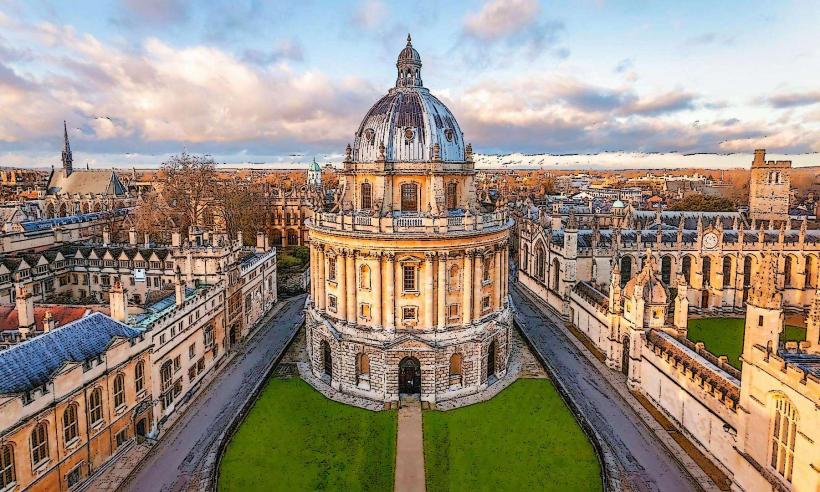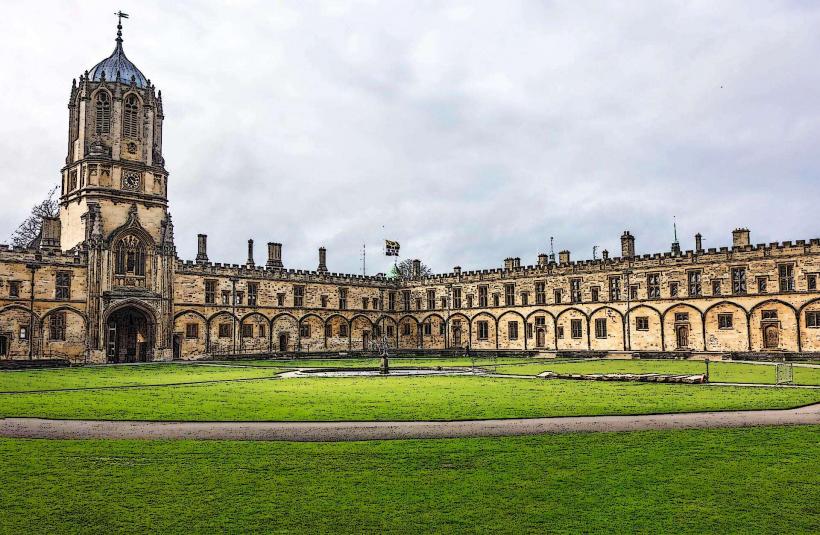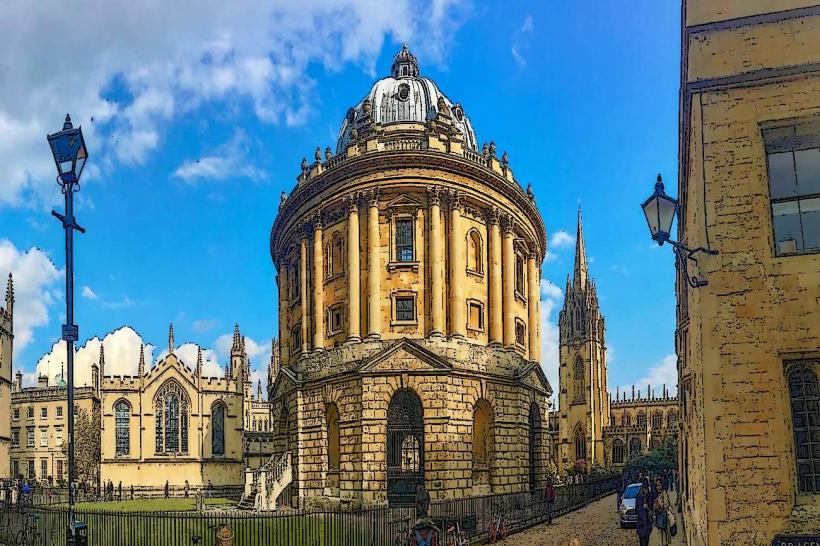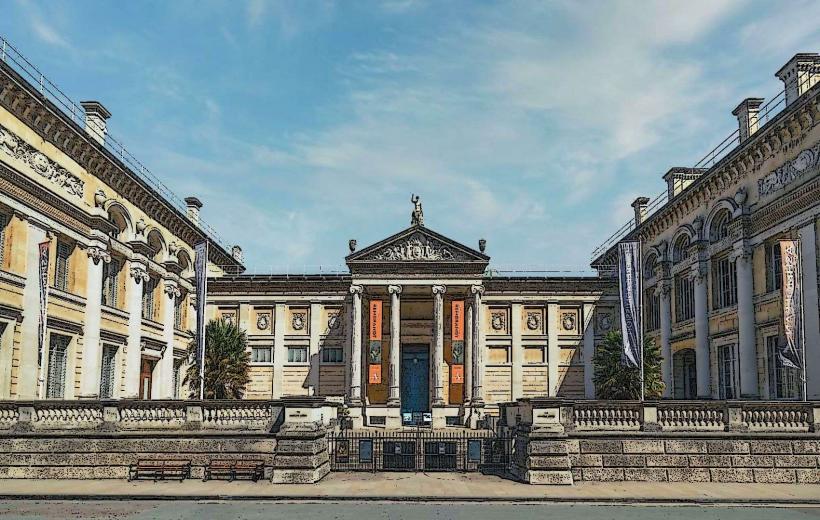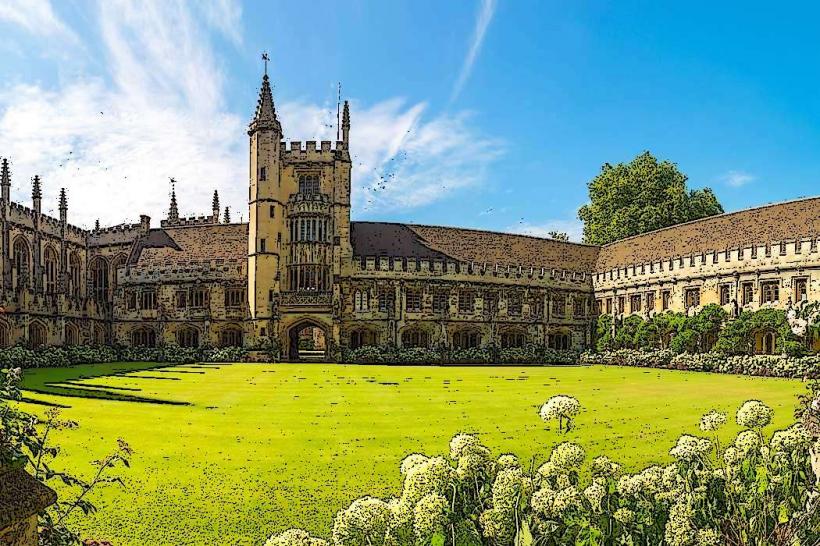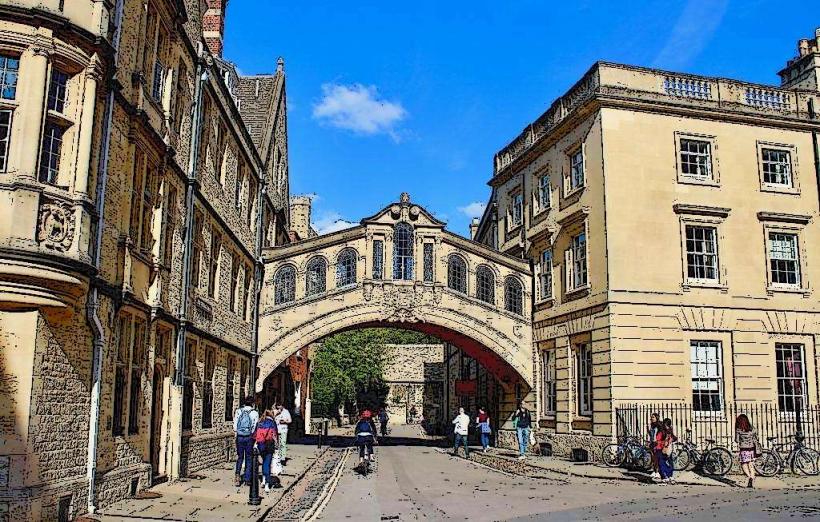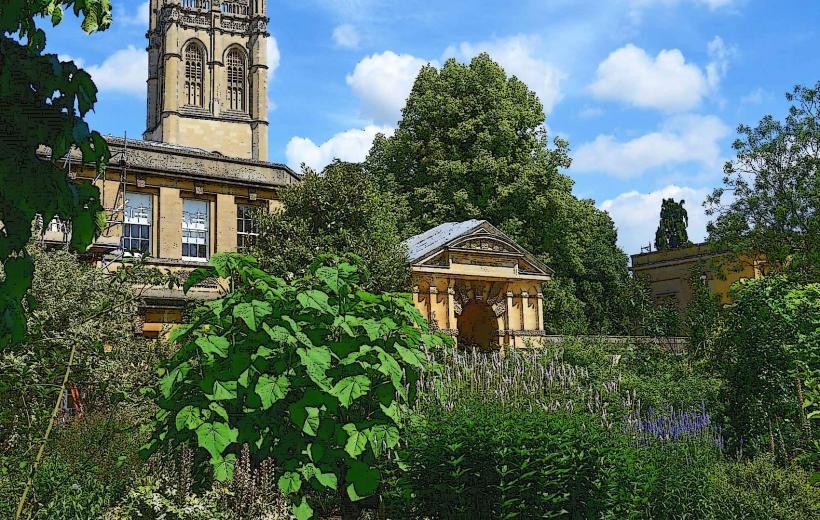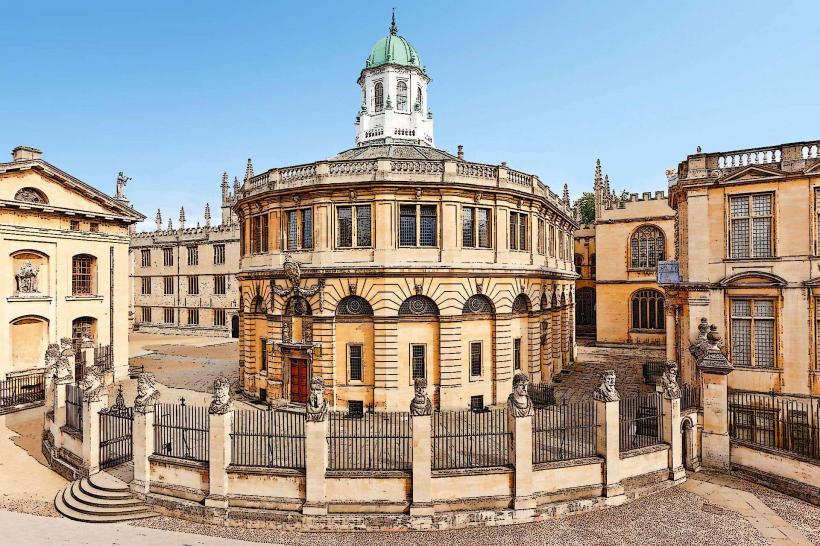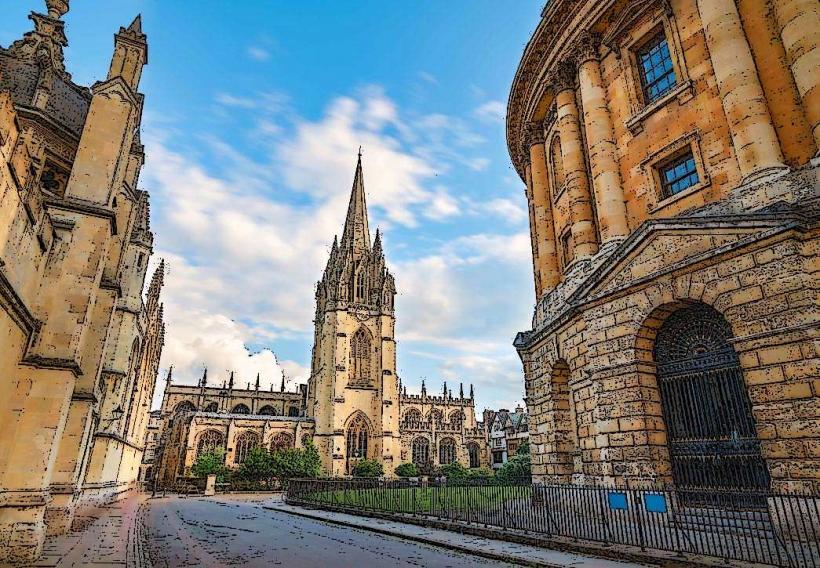Information
City: OxfordCountry: United Kingdom
Continent: Europe
Oxford is one of the most famous and historic cities in England, known globally as the home of the prestigious University of Oxford. Situated in the county of Oxfordshire in central southern England, the city is renowned for its academic excellence, stunning architecture, and rich cultural heritage. Here's a detailed look at Oxford:
1. Geography and Location
- Location: Oxford is located approximately 56 miles (90 km) northwest of London, on the River Thames (also known as the River Isis in Oxford). The city is nestled within the rolling hills of the Oxfordshire countryside, providing a combination of urban and rural charm.
- Area: Oxford covers about 45 square miles (116 square kilometers).
- Climate: Oxford experiences a temperate maritime climate, characterized by mild winters and cool summers. The city sees moderate rainfall throughout the year, with occasional snow in winter.
2. History
- Early History: Oxford’s history dates back to the early medieval period, with evidence of settlement as early as the Saxon era. The name "Oxford" is derived from the Old English term Oxenaforda, meaning "a ford (shallow crossing) of the oxen."
- Medieval Period: The city's importance grew during the Norman period, when it became a center for trade and administration. Oxford was granted a market charter in 1101, and soon after, the University of Oxford began to form.
- University of Oxford: Founded around the 12th century, the University of Oxford is the oldest university in the English-speaking world. Its collegiate system and long history of academic achievements have made Oxford a global symbol of education and intellectual excellence.
- Modern Era: In the 19th and 20th centuries, Oxford developed as a cultural and intellectual hub, attracting students, scholars, and visitors from around the world. The city became an important center for publishing, science, and the arts, and it continues to thrive as a major university town today.
3. Landmarks and Attractions
Oxford is a city filled with historic buildings, cultural institutions, and beautiful green spaces. Some of the key landmarks include:
- University of Oxford: The university itself is the city’s main attraction, with its numerous colleges, libraries, and halls. Some of the most famous colleges include:
- Christ Church College: One of the largest and most famous colleges, known for its stunning architecture, extensive grounds, and the Christ Church Cathedral. Christ Church has also served as a filming location for the Harry Potter films.
- Magdalen College: Known for its beautiful grounds, including the Magdalen College Deer Park, and its iconic Magdalen Tower.
- Balliol College: One of the oldest colleges, founded in 1263, with a reputation for academic excellence.
- New College: Famous for its beautiful chapel and its cloisters, this college also has a significant place in Oxford’s history.
- Radcliffe Camera: A stunning circular building and part of the Bodleian Library, the Radcliffe Camera is one of Oxford’s most iconic landmarks. It serves as a reading room and a symbol of the city's academic tradition.
- Bodleian Library: One of the oldest libraries in Europe, it houses millions of books and is a treasure trove of historical texts. The library’s Divinity School and Duke Humphrey’s Library are must-see locations for visitors.
- Ashmolean Museum: Founded in 1683, the Ashmolean is the world’s first university museum and houses collections of art, archaeology, and ancient artifacts, including works by Michelangelo, Leonardo da Vinci, and J.M.W. Turner.
- Oxford Castle and Prison: A historic site that dates back to Saxon times, the castle was originally built by William the Conqueror. Visitors can explore the castle tower and prison and learn about the city’s medieval past.
- Sheldonian Theatre: A masterpiece of architecture designed by Christopher Wren, this theatre is used for university ceremonies, including graduation and lectures. Its stunning interior and magnificent ceiling make it a popular spot for visitors.
- Carfax Tower: The medieval tower of the St Martin's Church, offering panoramic views of the city. It is located at the junction of several main streets in Oxford and is a landmark visible from many parts of the city.
- Bridge of Sighs: A covered bridge at Hertford College, resembling the famous Bridge of Sighs in Venice. It is one of the most photographed spots in Oxford.
- Pitt Rivers Museum: A fascinating museum that houses a vast collection of anthropological and archaeological artifacts from around the world, offering insights into human history and cultures.
- Oxford Botanic Garden: The oldest botanic garden in the UK, founded in 1621, with a stunning collection of plants from across the globe. The garden is located near the River Thames and provides a peaceful escape from the city center.
4. Culture and Arts
Oxford is a center of intellectual and cultural activity:
- Oxford University Press: The university’s publishing arm is one of the world’s largest academic publishers and a key contributor to Oxford’s global reputation.
- Theatre: Oxford has a vibrant theater scene, with venues such as the Oxford Playhouse and the Old Fire Station showcasing a wide range of performances from classic plays to contemporary works. The city is also home to Theatre in the Park, a series of outdoor performances.
- Music: Oxford has a strong musical tradition, particularly in classical music. The Oxford Philharmonic Orchestra performs regularly, and the city is home to many choirs and university music ensembles. The Oxford Lieder Festival is a major event celebrating song and chamber music.
- Festivals: Oxford hosts a range of festivals throughout the year, including the Oxford Literary Festival, the Oxford International Film Festival, and the Oxford Science Festival.
- Film: Oxford has also been featured in many films, including Harry Potter, The Golden Compass, and The Riot Club, due to its iconic settings and picturesque locations.
5. Architecture
Oxford boasts a remarkable mix of medieval, Renaissance, and modern architecture, with its most famous structures being university buildings. The key architectural styles include:
- Medieval Architecture: Oxford’s colleges and churches showcase classic medieval designs, with Gothic and Norman elements, seen in buildings like the Oxford Castle and University Church of St. Mary the Virgin.
- Classical and Georgian: Many of Oxford’s university buildings and townhouses feature Georgian architecture, with Palladian and Neoclassical influences, particularly around the Radcliffe Square and Broad Street.
- Christopher Wren's Influence: Wren’s influence can be seen in buildings such as the Sheldonian Theatre, a fine example of Baroque architecture.
- Modern Architecture: Oxford is also home to several modern buildings, including the Zoology Research Building and the Blavatnik School of Government, which combine contemporary designs with the city’s traditional architectural character.
6. Parks and Green Spaces
- Port Meadow: A large, wild area of common land that offers beautiful views and is ideal for walking and picnicking. It’s also a haven for wildlife.
- University Parks: A beautiful parkland area near the university, perfect for strolling or relaxing, with scenic walks along the River Cherwell.
- Christ Church Meadow: Located alongside Christ Church College, this large green space offers picturesque views of the college and the River Thames.
- The Botanic Garden: As well as being a major attraction, it’s a tranquil space that offers botanical research and exploration.
7. Education
- University of Oxford: The city’s primary educational institution and a global leader in higher education and research. It is made up of 39 autonomous colleges, each with its own traditions and history. The university is known for its rigorous academic programs, including Philosophy, Politics, and Economics (PPE), Medicine, and Law.
- Oxford Brookes University: A modern university that offers a wide range of undergraduate and postgraduate programs. Known for its strong programs in Architecture, Business, and Hospitality Management.
8. Transport
- Oxford Railway Station: Provides regular services to London and other major cities, including Birmingham, Manchester, and Reading.
- Bus and Cycling: Oxford has an excellent bus network and is known as one of the most bike-friendly cities in the UK. Cycling is a popular mode of transportation, with numerous dedicated cycle lanes and bike-sharing programs.
- Oxford Airport: Located a few miles outside the city, it offers flights to European destinations.
9. Economy
- Education and Publishing: The University of Oxford is the cornerstone of the city’s economy, alongside the publishing industry, with Oxford University Press being a major employer.
- Tourism: Oxford attracts millions of visitors annually, contributing significantly to the city’s economy.
- Technology and Research: Oxford has a growing tech sector, with many startups and research centers focusing on medical, scientific, and technological innovations.
In summary, Oxford is a city steeped in history and academic tradition, blending medieval charm with modern cultural vibrancy. It’s an intellectual hub, a city of beautiful architecture, and a place of artistic and scholarly pursuits.

